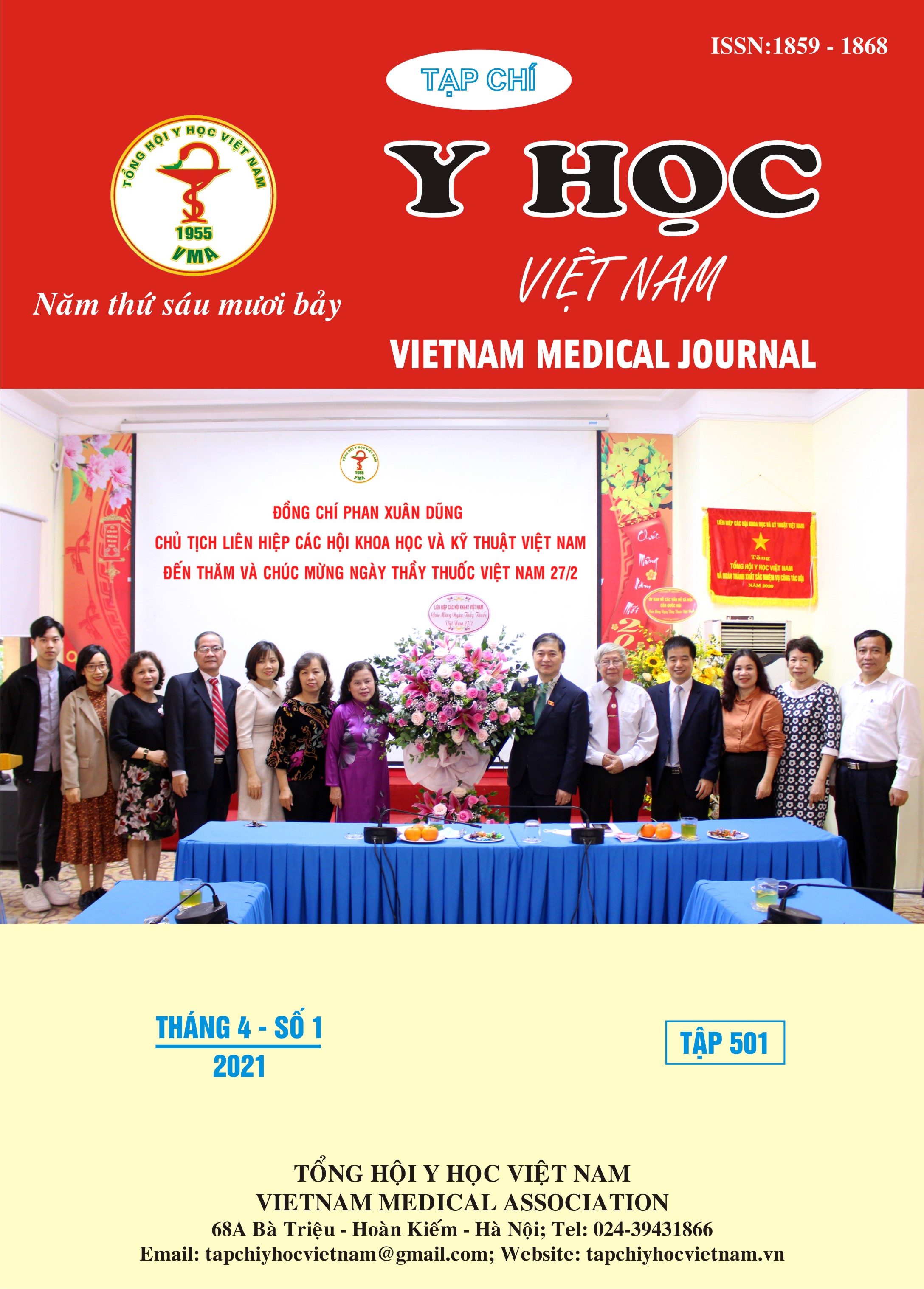CHARACTERISTICS OF CORONARY ARTERY LESIONSIN PATIENTS WITH POSTERIOR ST ELEVATION ACUTE MYOCARDIAL INFARCTION
Main Article Content
Abstract
Objective: To evaluate rate and some characteristics of coronary artery lesion in patients with acuteposterior ST elevation myocardial infarctionat Thong Nhat Hospital in Ho Chi Minh city. Subjects and methods: Cross-sectional and longitudinal studyin all patients with Posterior ST elevation acute myocardial infarction admitted to Thong Nhat Hospital from 1/2017 to 6/2020. Results: The average age of the patients was 61.0 ± 12.7 (age). The rate of acute posterior ST elevation myocardial infarction was 20.5%. Cardiac shock accounted for 22.7%. The culprit coronary branch was the left circumflex artery (LCx) 59.1%, the right coronary artery (RCA) 40.9%, RCA dominated than LCx (61.4% versus 38.6%, p=0,037). The common lesion location in LCx was the middle 48%, type C lesions 56%, TIMI flow 0 was44%; meanwhile, the common lesion location in the RCA was at the proximal segment 47.4%, type C 63,2%, TIMI flow 0 was36.8%. Conclusions: Posterior ST elevation acute myocardial infarction accounted for more than a quarter of hospitalized ST elevation myocardial infarction. The culprit lesion was the left circumflex coronary artery in the majority of cases with the most common location of lesion being in the mid-segment.
Article Details
Keywords
Posterior ST elevation acute myocardial infarction, Left circumflex artery (LCx), Right coronary artery (RCA)
References
2. Hasdai D, Birnbaum Y, Herz I, et al (1995), ST segment depression in laterallimb leads ininferior wall acute myocardial infarction. Implicationsregarding the culprit artery and the site of obstruction, Eur Heart J; 16:1549–53.
3. Matetzky S, Freimark D, Feinberg MS, et al (1999), Acute myocardial infarctionwith isolated ST-segment elevation in posterior chest leads V7 –9: “hidden” ST-segment elevations revealing acute posterior infarction, JAm Coll Cardiol; 34:748–53.
4. Ibanez B, James S, Agewall S, Antunes MJ, et al (2018), ESC Guidelines for the management of acute myocardial infarction in patients presenting with ST-segment elevation.Kardiol Pol,76(2):229-313.
5. Din I, Adil M, Hameedullah, Faheem M, Abbas F (2014), Accuracy of 12 lead ECG for diagnosis of posterior myocardial infarction, J Postgrad Med Inst; 28(2):145-8.
6. Miquel VB, Alba M, Victor GH, Francisco JN, et al (2019), Electrocardiographic Distinction of Left Circumflex and Right Coronary Artery Occlusion in Patients With Inferior Acute Myocardial Infarction, Am J Cardiol; 123(7): 1019-1025.
7. Kosuge M, Kimura K, Ishikawa T, et al (1998), New electrocardiographiccriteria for predicting the site of coronary artery occlusion in inferior wallacute myocardial infarction, Am J Cardiol; 82:1318–22
8. Wung SF, Drew BJ, (2001), New electrocardiographic criteria for posterior wall acute myocardial ischemia validated by a percutaneous transluminal coronary angioplasty model of acute myocardial infarction, Am J Cardiol; 87(8):970-4.


